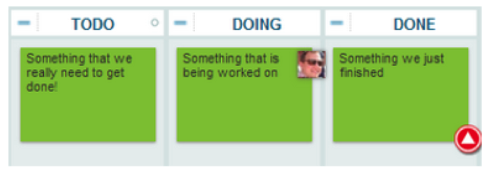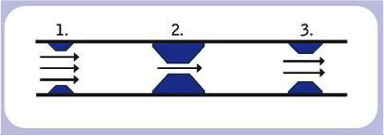
It sounds counter-intuitive, but limiting your work in process (WIP) actually improves your flow — and your team’s productivity. In this three-part series, Stephen Franklin, CIO at Planview AgilePlace, draws from experience to explain the common obstacles you’ll face when setting WIP limits, and tips for overcoming them.
Missed deadlines, constant task switching and inefficient handoffs are just a few of the consequences of having too much work in process (WIP). Throughout my career in the IT field, I’ve witnessed firsthand the detrimental effects of juggling too many balls at once, whether at the personal, team or organizational level. I’ve seen tidal waves of WIP completely submerge entire organizations. I’ve also seen how effective it can be when teams and organizations apply WIP limits and become hyper-productive by laser focusing their attention on only the work that matters most.
Introducing WIP limits isn’t easy and can feel like a journey into the unknown. You need to be prepared for what lies ahead, resist the temptation to turn back and stay focused on reaching your destination. With perseverance comes significant improvements. This three-part blog series will serve as your guide.
What is WIP anyway?
Before we discuss WIP limits, let’s back up a moment and define WIP. According to the manufacturing industry definition, “work in process” refers to all materials and partly finished products that are at various stages of the process; therefore, it excludes the raw materials at the start of the product cycle and the finished products at the end.
In knowledge work, this usually translates into value demand that has been started but is not yet providing value to the customer. Essentially, it’s an investment that has had zero return and depreciates in value over time.

By either definition, having large amounts of work in process is detrimental to any system that is delivering customer value. In manufacturing, Kanban is about optimizing the flow of work through the system, speeding delivery of value into the hands of the customer and avoiding wasteful creation of work-in-process inventory. In knowledge work, the same principles apply: rapid delivery of value to the customer and a reduction of the amount of unfinished work in process, which can clog up the system and create bottlenecks and impediments to flow.
Why do WIP limits matter?
Limiting WIP and applying WIP limits require us to understand the effects of our actions on the system as a whole. The amount of work in process needs to align with the system’s overall capacity to ensure a fluid, consistent flow.

We need to consider up front how starting new work impacts downstream processes so we don’t inadvertently cause bottlenecks that slow down the system.
Because our primary goal is to deliver value to the customer, this can result in not introducing new work into the system, which can lead to — gasp — team members not being at 100% of their capacity. That’s where it starts to get hard. It’s simply not in our DNA to think this way. Idle time?! As humans, we’re conditioned to equate personal utilization with productivity.
Why are WIP limits so hard for us?
We’re fundamentally programmed to act in our own self-interest. Until the Industrial Revolution, humans worked in less interdependent, less complex systems where individual productivity aligned more closely with achievement. The complexity of today’s systems have left us at odds with our nature. For most of us, our educational systems haven’t done much to help, either; from an early age, we’ve been evaluated based on individual achievement. Social pressures further contribute to our desire to reward the individuals who are most active and who work the hardest.
This is only the tip of the iceberg in understanding why limiting WIP puts us in conflict with ourselves. When introducing WIP limits on the team and organizational levels, it gets exponentially more difficult. At these levels, we’re also dealing with the additional complications of human interactions and interpersonal dynamics. For organizations that don’t understand, embrace and promote systems thinking, let’s just say that things can get messy.
Is there anything we can do to make WIP limits easier?
Yes. It’s not surprising that most people initially resist the idea of limiting WIP. It requires a shift in mindset that goes against human nature and reconditions people away from “localized efficiency bias.”
We can overcome this, however; don’t lose hope. The key to success lies in understanding how systems function. People have to learn to be mindful of the effects of their actions on the system. Knowledge, understanding and practice can help us change our behavior.
Anything that is hard requires time, dedication, patience and perseverance. WIP limits are an evolutionary journey, and there will be hard lessons learned along the way. People and teams will be forced out of their comfort zones. There will be bumps in the road, and at times, you will regress. But for the individuals, teams and organizations that begin to see the power of limiting WIP and the value of the focus and clarity that it brings, the transformation will be amazing.
In my next post, I’ll discuss some of the common, everyday obstacles we face in our quest to limit the work we have in process. I’ll look at how the first few steps in the Kanban maturity model provide a helpful framework for lowering WIP. I’ll also explore some of the lessons that I’ve learned along the way and provide some practical advice to help you stay on track with WIP limits.
![A Global Collaborative Work Management Blueprint [Video]](https://blog.planview.com/wp-content/uploads/2019/07/A-Global-Collaborative-Work-management-blueprint.png)



